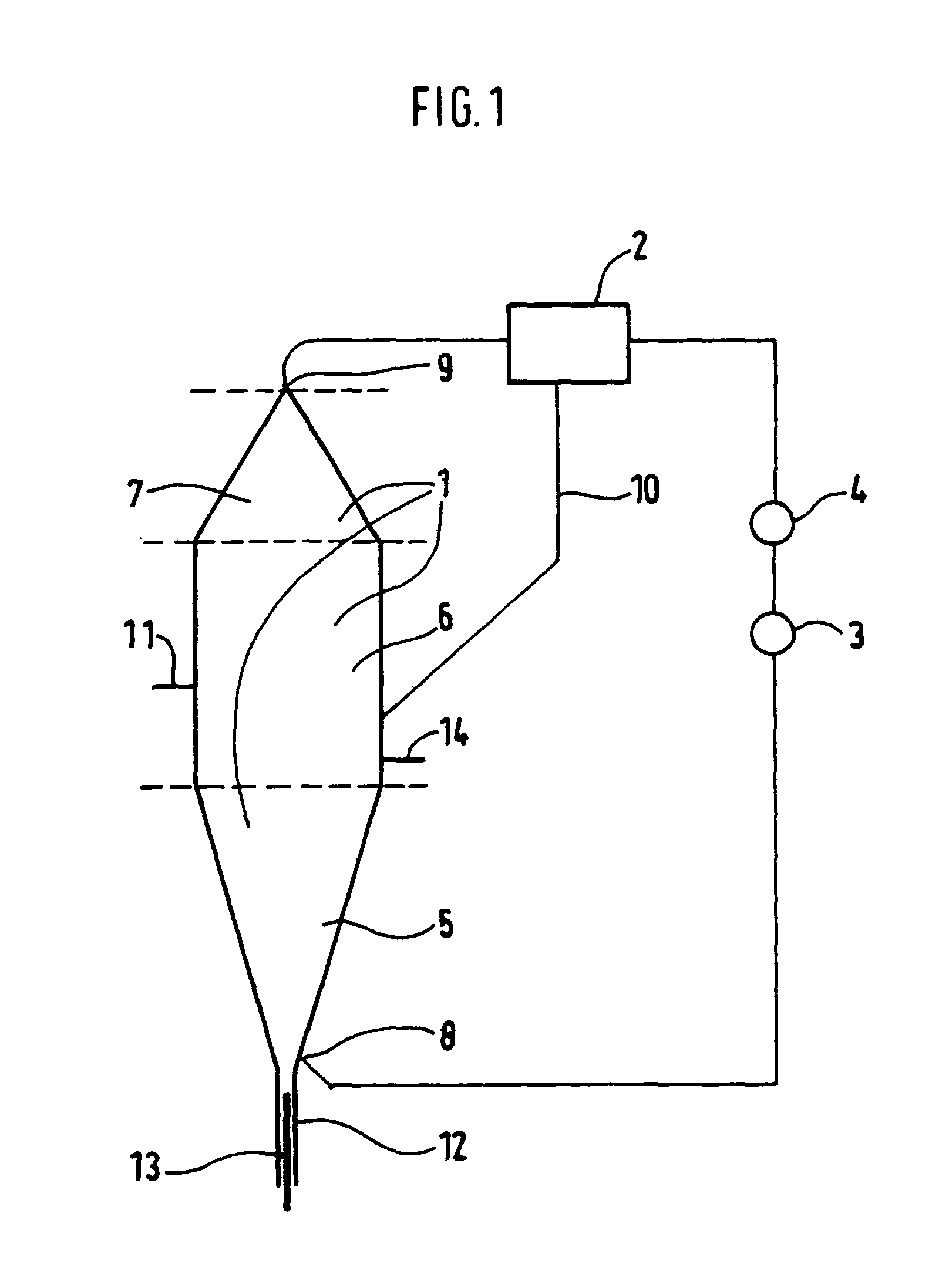High throughput reactor assembly for polymerization of olefins
a high-throughput, reactor technology, applied in chemical/physical/physical-chemical stationary reactors, chemical/physical/physical-chemical processes, chemical apparatus and processes, etc., can solve the problems of increased bubble size, material entrainment, material not being able to be broken up, etc., to achieve a better degree of solid separation and reduce the amount of solids
- Summary
- Abstract
- Description
- Claims
- Application Information
AI Technical Summary
Benefits of technology
Problems solved by technology
Method used
Image
Examples
example 1
[0238]The reactor as described above was operated so that flow rate of the fluidization gas was 65 m3 / h and the bed height was 1100 mm (corresponding to about 49% of the combined volume of the middle and upper zones) from the bottom of the cylindrical section. The gas flow rate corresponds to a superficial gas velocity of 10 cm / s.
[0239]It could be seen that the bubble size increased when the bubbles reached the upper part of the bed.
example 2
[0240]The procedure of Example 1 was repeated with the exception that the bed height was 2100 mm (corresponding to 94% of the combined volume of the middle and upper zones). Also in this case the reactor could be operated in a stable manner for hours. The polymer carried over by the fluidization gas could be easily separated from the gas in a separation vessel where the polymer was allowed to settle and a clean fluidization gas stream containing less 3 (5) than 1% by weight of particles was obtained. The polymer recovered in the separation vessel was a representative sample of the total polymer. Thus, no segregation of polymer fines could be observed.
[0241]It could be seen that even though small bubbles were present in the fluidized bed, big bubbles having a diameter of more than half of the bed diameter, were absent.
example 3
[0242]The procedure of Example 1 was repeated except that the gas flow was 195 m3 / h corresponding to a superficial gas velocity of 30 cm / s. The operation of the reactor was stable and without problems. During the operation lumps having a weight of about 12 grams were introduced into the upper part of the fluidized bed. In average within a period of about 400 seconds the lumps travelled through the bed to the bottom of the reactor and they could be removed via the vertical pipe at the bottom.
PUM
| Property | Measurement | Unit |
|---|---|---|
| cone angle | aaaaa | aaaaa |
| cone angle | aaaaa | aaaaa |
| inner diameter | aaaaa | aaaaa |
Abstract
Description
Claims
Application Information
 Login to View More
Login to View More - R&D
- Intellectual Property
- Life Sciences
- Materials
- Tech Scout
- Unparalleled Data Quality
- Higher Quality Content
- 60% Fewer Hallucinations
Browse by: Latest US Patents, China's latest patents, Technical Efficacy Thesaurus, Application Domain, Technology Topic, Popular Technical Reports.
© 2025 PatSnap. All rights reserved.Legal|Privacy policy|Modern Slavery Act Transparency Statement|Sitemap|About US| Contact US: help@patsnap.com



